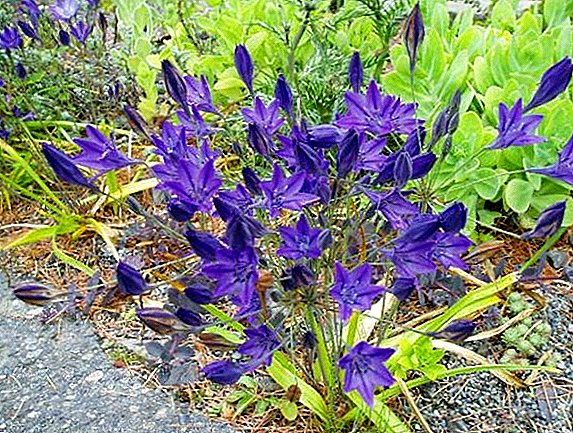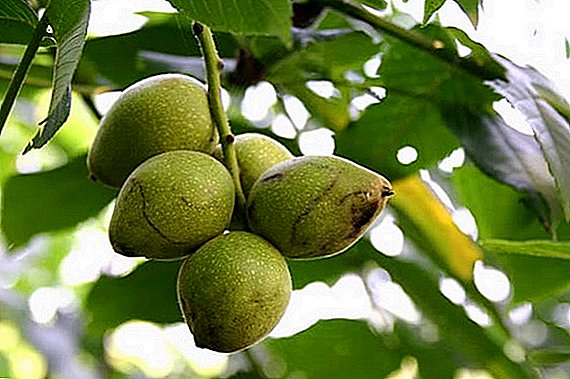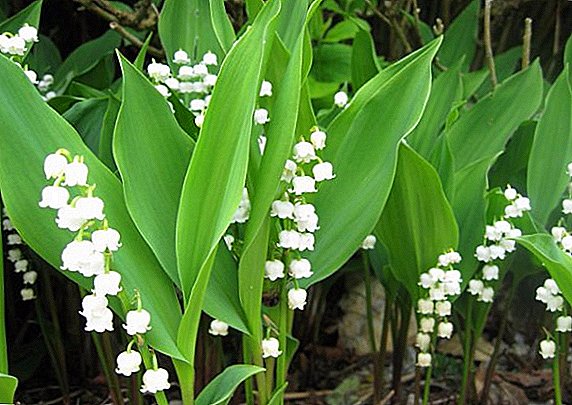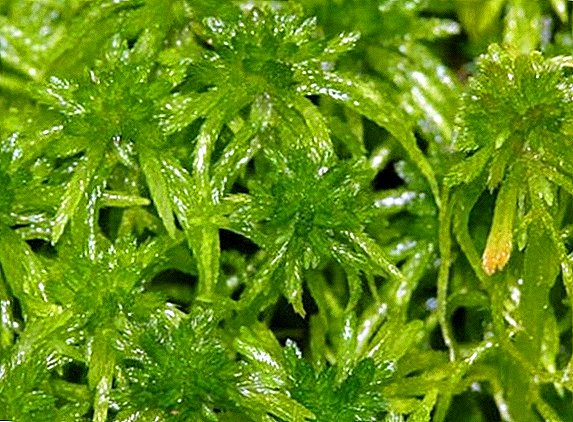 Sphagnum - this moss is far from the most common, and therefore deserving close attention and careful study. Among the rest of the forest vegetation, he stands out with a whole bunch of truly remarkable qualities. Sphagnum is a swamp moss, however, to be precise, the plant does not just settle in wetlands, but it is what creates them. In addition, peat reserves are formed from it. Today, moss-sphagnum, thanks to its unique abilities, is actively used in medicine.
Sphagnum - this moss is far from the most common, and therefore deserving close attention and careful study. Among the rest of the forest vegetation, he stands out with a whole bunch of truly remarkable qualities. Sphagnum is a swamp moss, however, to be precise, the plant does not just settle in wetlands, but it is what creates them. In addition, peat reserves are formed from it. Today, moss-sphagnum, thanks to its unique abilities, is actively used in medicine.
Moss-sphagnum: description and composition
White, peat moss - this is also popularly called sphagnum. It is a small herbaceous marsh plant, which is united under the common generic name - Sphagnum and belongs to the Sphagnaceae family of sphagnum or peat mosses.  Science knows many different types of sphagnum, differing in the structure of the stems and leaves, as well as in size, color and habitat. If you are interested in the question of where to get the sphagnum moss, then go to the swamp, where it forms a continuous shaky carpet called turf.
Science knows many different types of sphagnum, differing in the structure of the stems and leaves, as well as in size, color and habitat. If you are interested in the question of where to get the sphagnum moss, then go to the swamp, where it forms a continuous shaky carpet called turf.
Let's look at how sphagnum peat is formed and what it is. Sphagous turf is met not only in the swamps, but also on the lakes. Here she swims peacefully on the surface of the water. Turf consists of many small specimens of sphagnum, which grow new tops each year, while their lower part dies off and, falling to the bottom, over time forms peat deposits. This uncomplicated way and the formation of swamps.
Important! Remember: sphagnum breeds on soils with low aeration. In order to prevent the growth of moss on your site, you should organize high-quality ventilation of the soil.
 Sphagnum has branched stems. The branches of the plant are strongly crowded at the top, but, due to the strong stretching of the internodes, as they grow, they begin to move away from each other, due to which their branches turn in different directions. As the moss matures, cavities form in the old parts of its stem.
Sphagnum has branched stems. The branches of the plant are strongly crowded at the top, but, due to the strong stretching of the internodes, as they grow, they begin to move away from each other, due to which their branches turn in different directions. As the moss matures, cavities form in the old parts of its stem.
The bark of the stalks of sphagnum consists of several layers of cells of large size, which are devoid of plasma and its inclusions, so that they are able to accumulate water like a sponge, and then hold it for a long time.
This species of moss has sessile leaves, which are widely attached to its stems and look very similar to tongues. The leaves are divided into oblong, large and solitary. The leaves growing on the branches of moss, narrow, have a slightly elongated shape and a tiled arrangement. And growing on the tops of the branches of their heads are bent. By the way, all types of moss leaves have hollow cells that can accumulate water.
More than 300 different species of sphagnum moss are known in the world, with 40 of them living in northern Russia, forming sphagnum swamps there. Sphagnum predominantly grows in forest areas and the tundra of the northern hemisphere. In the southern hemisphere, moss is found high in the mountains and very rarely in temperate climatic zones on the plains.
 Sphagnum multiplies by spores or offspring, and the second method is more common: every year one of the branches begins to develop more intensively and reaches the size of the mother plant, as a result of which it is somewhat removed from the bush and turns into an independent plant.
Sphagnum multiplies by spores or offspring, and the second method is more common: every year one of the branches begins to develop more intensively and reaches the size of the mother plant, as a result of which it is somewhat removed from the bush and turns into an independent plant.
What substances contains sphagnum:
- cellulose;
- triterpenes;
- sphagnol;
- coumarins;
- Sahara;
- pectins;
- phenolic acids;
- resins;
- mineral salts.
Did you know? Residents of the northern regions of Russia put sphagnum to their babies in their cradles so that the crumbs were warm, dry and comfortable. It was also used in the construction of hives, to insulate the walls of houses or as absorbent bedding in stalls and stables.
What is useful moss-sphagnum, the use of therapeutic properties
Today, sphagnum has found its widespread use in both traditional and traditional medicine. Sphagnum has unique healing properties.
 A careful study of the plant confirmed that the sphagnum moss has excellent bactericidal properties due to the presence of coumarins, sphagnol and organic acids in its composition. In addition, we managed to find out that he has a pronounced antifungal effect. Due to this, sphagnum moss has found its use in the treatment of purulent wounds, as well as other traumatic injuries of the skin. It is used as a substrate for immobilization of fractures under extreme conditions.
A careful study of the plant confirmed that the sphagnum moss has excellent bactericidal properties due to the presence of coumarins, sphagnol and organic acids in its composition. In addition, we managed to find out that he has a pronounced antifungal effect. Due to this, sphagnum moss has found its use in the treatment of purulent wounds, as well as other traumatic injuries of the skin. It is used as a substrate for immobilization of fractures under extreme conditions.
Sphagnum has three very important qualities in medicine:
- high hygroscopicity;
- excellent breathability;
- antibacterial and antifungal effects.
Did you know? Conventional cotton wool is as much as 25% less hygroscopic than sphagnum, which, even when wet, maintains excellent aeration.
Sphagnum has invaluable healing properties, which are widely used in his practice by traditional healers and herbalists.
Below we consider the diseases in which sphagnum helps and how to use it correctly.
 Prevention of pressure sores. The hygroscopic and bactericidal properties of sphagnum are involved here. Moss has long been used to equip bedding for bedridden people, which prevents the appearance of pressure sores and unpleasant odor, as it perfectly absorbs sweat and has a powerful bactericidal effect.
Prevention of pressure sores. The hygroscopic and bactericidal properties of sphagnum are involved here. Moss has long been used to equip bedding for bedridden people, which prevents the appearance of pressure sores and unpleasant odor, as it perfectly absorbs sweat and has a powerful bactericidal effect.
Treatment of osteochondrosis, rheumatism and radiculitis. Dry moss brewed with boiling water in a ratio of 1:10 and insist until cool, then filtered and poured into the bathroom, diluted with warm water. They take a bath with a decoction for not more than 40 minutes, after which all the affected joints are rubbed with any warming ointment, they are wrapped and go to bed. Sometimes, to relieve inflammation from one or several joints, moss compresses are placed on them. To prepare the compress, you must take a tablespoon of sphagnum and pour half a liter of boiling water, let it stand. After that, the moss should be filtered and applied to the affected joints moistened with decoction bandages.
With colitis and enterocolitis It is recommended to take a teaspoon of crushed dry sphagnum 30 minutes before meals.
For prophylaxis ARI, ARVI and flu It is recommended to wash infusion of sphagnum, rinse their throats and rinse the nasal passages.
The use of sphagnum to produce alcohol
 Sphagnum peat is the richest source of various chemical products. From it receive medical, wine and wood alcohol, bitumen, fodder yeast and humic acids.
Sphagnum peat is the richest source of various chemical products. From it receive medical, wine and wood alcohol, bitumen, fodder yeast and humic acids.
For the preparation of alcohol, young moss peat is taken, which is transferred into sugar by means of sulfuric acid under pressure in an autoclave. Then the resulting sugary solutions are fermented with yeast for alcohol. And according to Professor Moser, out of 100 pounds of peat, you can get from 5 to 6 buckets of 90-degree alcohol.
Bactericidal properties of cuts and burns
Such beneficial properties of sphagnum moss, such as high hygroscopicity and bactericidal activity, make it possible to actively use it in the treatment of wounds as a drug with a pronounced antibacterial effect.
The use of sphagnum moss is advisable when:
- fractures as a bactericidal and hygroscopic pad between the body and the immobilizing tire;
- superficial skin injuries such as frostbite, cuts and burns.
Did you know? From historical records it is known that sphagnum was used for medical purposes since the XI century. In the nineteenth century, sphagnum was sent as a dressing to all Russian provinces. The doctors of that time highly appreciated this plant and actively used its healing properties to alleviate the suffering of their patients.
 For treatment of nonhealing, suppurating wounds and ulcers, one should take dry crushed moss, pour boiling water until a slurry forms, which is then applied warm to the wounds. No less effective will be such compresses in the treatment of burns, diaper rash, bruises and frostbite. To disinfect suppurating wounds and ulcers, they can also be powdered with dry moss powder, leaving the wound in this form for several minutes, after which they are well washed with sphagnum infusion and aseptic dressing is applied.
For treatment of nonhealing, suppurating wounds and ulcers, one should take dry crushed moss, pour boiling water until a slurry forms, which is then applied warm to the wounds. No less effective will be such compresses in the treatment of burns, diaper rash, bruises and frostbite. To disinfect suppurating wounds and ulcers, they can also be powdered with dry moss powder, leaving the wound in this form for several minutes, after which they are well washed with sphagnum infusion and aseptic dressing is applied.How is sphagnum moss used in dermatological diseases
 Moss-sphagnum can bring great benefits in the treatment of dermatological diseases. It is often used to treat nail fungus. To defeat the disease, insoles made of dried moss are put into the shoes, which are not removed throughout the day.
Moss-sphagnum can bring great benefits in the treatment of dermatological diseases. It is often used to treat nail fungus. To defeat the disease, insoles made of dried moss are put into the shoes, which are not removed throughout the day.
It goes without saying that the moss should be in contact with the site of infection, and therefore you can simply put a piece of the plant in the sock.
Sphagnum also helps to get rid of psoriasis, for this you should take a bath with infusion of this plant. To prepare the drug, moss is poured with hot water, infused and added when taking baths.
Sphagnum moss, how to prepare a medicinal plant
Moss-sphagnum can be found in various places, but the most reliable to collect one that grows in the marshes. To stock up on medicinal raw materials, you should follow simple rules.
Important! The preparation of sphagnum must be done very carefully: do not tear the plant along with the bottom cushion, as you will destroy in the collection area the entire colony of this nondescript but very useful plant.
When collecting moss just neatly cut with a knife or scissors top green part of the plant. When you come home to destroy all insect larvae, pour hot water over the collected moss.
 To dry the plant should be in the shade, in a well-ventilated place. Do not use electric dryers, as the drying of this plant in them is very uneven.
To dry the plant should be in the shade, in a well-ventilated place. Do not use electric dryers, as the drying of this plant in them is very uneven.
After the moss is completely dry, fold it into paper or cloth bags and store it in a dark place.
Moss-sphagnum: whether there are contraindications
If you are interested in the question of whether the moss is harmful to humans, then be sure that this is the safest plant. Despite a careful study of sphagnum, scientists have not been able to identify any contraindications. The only thing to fear when using this plant is the individual intolerance of its components.
Sphagnum moss is a priceless gift of the forest, which, if used correctly, will help to preserve human health and prolong life.












